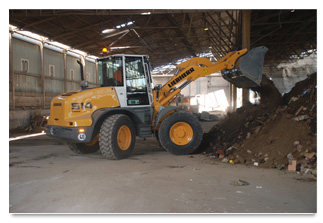The Cost of Recycling and the Waste Recycling Industry
 Waste and how to dispose of it has become a major issue in Australia today.
Waste and how to dispose of it has become a major issue in Australia today.
Current government legislation aims to reduce landfill content across all states by reprocessing more domestic, commercial and industrial waste thereby reducing landfill.
To encourage reprocessing they are pushing up the cost of landfill with levies and charges such as the Victorian Goverment's Waste Levy, thereby making it more expensive to dispose at landfill sites in the normal fashion with common waste materials.
In short the consumer will pay more for direct landfill making reprocessing and recycling a cheaper or economically viable option.
Industries reprocessing waste are growing each year as various recycled products become economically viable through new technology. These new technologies have seen more and more of our waste put to good use in new products that are created using less raw materials and non-renewable resources.
Eastern Recycling (ER) provides a publicly accessible Waste Transfer Station and Bin Hire service to the local community and business for the disposal of hard waste, building waste, garden waste and some other non hazardous products.
The average person does not realise the sorted material Eastern Recycling processes at its transfer station in Ringwood has associated costs - few materials are cheap to handle and dispose of, even recyclables.
Most processing facilities charge us for delivery and some are great distances away as nobody wants to live next to them. The reason they charge us is to cover their costs for the infrastructure, internal handling and sorting, transport, research and development of new processes, insurances, registration and depreciation and maintenance of equipment.
ER bears its costs, as do the facilities we provide the recyclables to.
Only by receiving these materials and being able to charge for them can these industries produce goods and make enough profit to continue trading.
These products are then put to market and purchased by many of the people that helped to create them. This ‘product cycle’ is cost-driven and all of us as consumers need to be aware that waste comes ‘at a cost’ and the more goods we acquire, the more goods we have to dispose of.
If only we thought of the disposal process when we bought something…maybe we might think twice…”Do I really need this”.
